What is Kenya PB round beans? Kenyan coffee grades PB and AA coffee beans taste and flavor differences
Kenyan AA coffee is considered to be one of the best specialty coffee in the world. For some friends who are not familiar with Kenyan coffee, Qianjie is often asked what AA means. In addition to AA, there is also the English letter PB, which is often asked about in front street. So what do these letters mean? I don't know if you will be confused by these questions in front of the screen. Today Qianjie will share with you the knowledge related to Kenyan coffee.
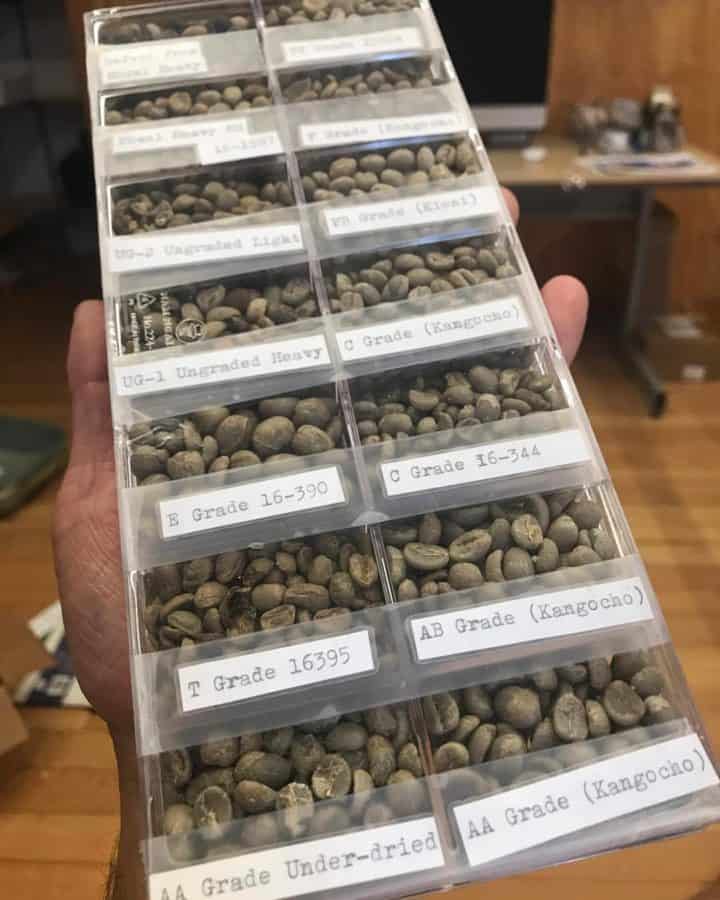
In fact, AA and PB are the grade titles of Kenyan coffee, in addition to:
Kenya E (elephant bean)
Kenya PB (Peaberry)
Kenya AA
Kenya AB
Kenya C
Kenya TT
Kenya T
Kenya MH/ML
It is well known that coffee is graded for raw beans before roasting, and Kenyan coffee is graded according to the size of raw beans for consistency, because beans of similar size are roasted at a similar rate. Beans of different sizes are unevenly roasted (for example, smaller beans are overbaked and larger beans are underbaked).
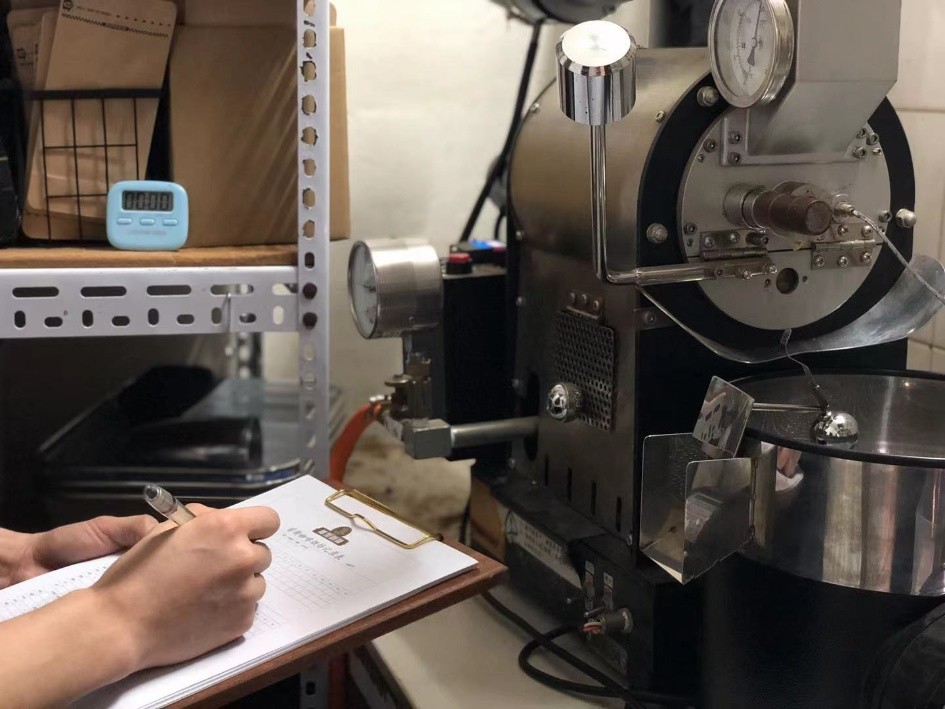
Kenya E coffee beans, also known as elephant coffee beans, are made up of the largest Kenyan coffee beans. Kenyan PB is also known as peas, coffee beans or round beans. Usually the coffee cherry is made up of two and a half beans, but there is only one coffee bean in the Kenyan PB coffee cherry, so the round bean is a more round coffee bean, which is very unlikely. Only about 5% of the Kenyan coffee beans are round beans. Many people will think that the flavor of round beans will be better than that of other crops. Kenya's AA coffee beans grow at an altitude of more than 6600 feet and have a size of 18 mesh. The specification of Kenyan AB is 16 items. Kenya AB coffee beans are made up of coffee beans An and B. Class A uses 6.8 mm screening, while Class B uses 6.2 mm screening. These two legumes, An and B, are mixed together to form a Kenyan AB. The size of grade C Kenyan coffee beans is about 15 mesh. Kenya TT refers to the light density coffee beans separated from Kenya An A, AB and E coffee beans by suction. Kenya T refers to coffee beans with broken, defective and small size. The last NH and ML refer to unripe coffee beans. So what's the difference between Kenyan AA and PB? Qianjie will be introduced in the next article.
The above is the Kenyan coffee grading system summed up by Qianjie. In order to better understand the Kenyan PB coffee beans, the front street coffee beans to introduce to you a long time ago the acquisition of a Kenyan PB coffee beans. The details of raw beans are as follows:
Kenya Neri Ichamama pearl beans
Country Kenya (Kenya)
Karima Village (Karima Village) in the producing area of Neyri
Processing plant Ichamama
Small farmers, members of producers' Othaya Farmers' Cooperative Society cooperative
1700-1750 meters above sea level
Variety SL28 / SL34
Soil volcanic soil
Temperature 18-26 °C
Harvest season November-January
Treatment of water separation, washing and sun drying of African scaffolding
Kenya is located in eastern Africa, close to Ethiopia, the native place of coffee. Kenyan coffee producers can be broadly divided into two categories-large estates and small farmers, but regardless of large estates or small farmers, the processed beans are sent to the official coffee shop for grading and auction: the coffee shop sends samples of the raw beans to be auctioned to interested buyers and holds an auction every Tuesday in Nairobi, the capital (that is, NCE auction).
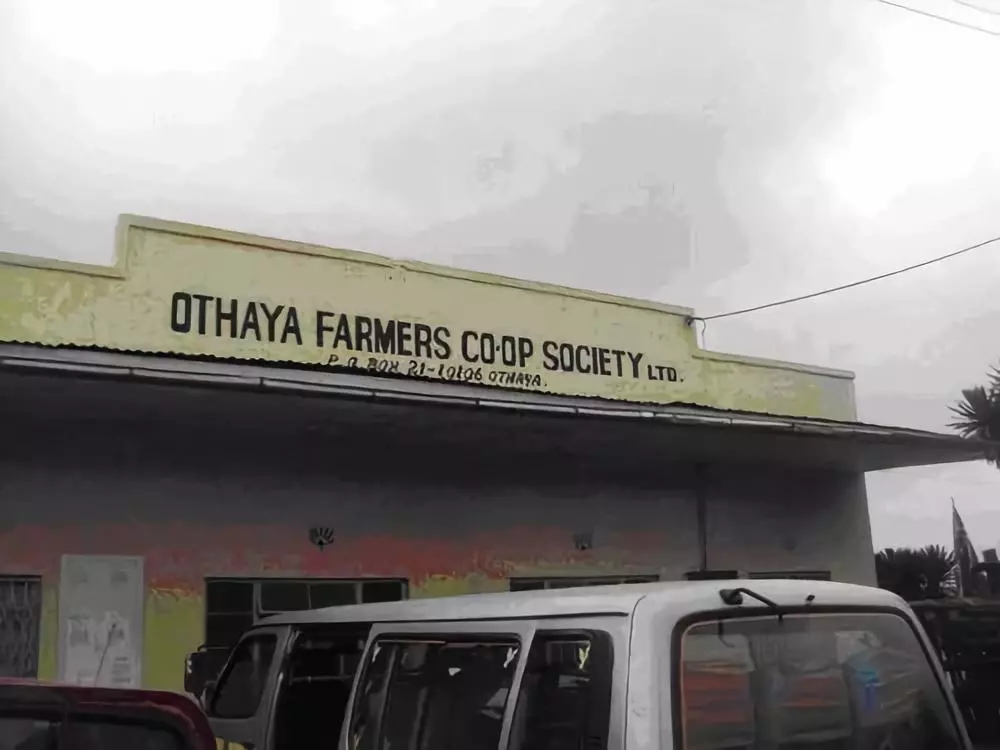
The Kenyan round bean on Qianjie is acquired from the Osaya Farmers' Cooperative (Othaya Farmers'Cooperative Society), located in the small town of Osaya in the Nyeri producing area of central Kenya, about 120km north of the capital Nairobi, is currently Kenya's largest coffee farmers' organization, which is almost self-organized and managed by small farmers and is Fairtrade certified. The vision of the Osaya Cooperative is to become the best managed cooperative in Kenya; the ultimate goal is to produce the highest quality coffee, sell it at the best price, and enable all its members and farmers to live the best life.
The Osaya Cooperative has 19 processing plants, including Kamoini, Gatugi, Ichamama and so on. Founded in 1956 and currently has about 14000 members, Osaia is a sizeable cooperative. In order to improve production and production quality, Osaya will apply to the World Bank for grants to hire consultants for agronomic and harvest training; they also have their own nursery and laboratories and will continue to develop new coffee varieties (ex. Batian) was used for planting experiment. Osaya cooperatives have their own planting technology and marketing licenses, they can trade with the international market on their own, and they are also a member of the Kenya Coffee Cooperative Export Organization (Kenya Cooperative Coffee Exporters, referred to as KCCE), so they can export coffee directly under the name of KCCE without having to go through the NCE bidding association.
Ichamama, located in Karuthi, Neri, has a farming area of 310 hectares. 927 farmers cultivate beautiful coffee on the rich red volcanic soil, next to the Ichama River, which provides excellent fresh water resources. The whole area grows tea as well as coffee. The elevation is extremely high, more than 1800 meters. The cool night makes the coffee cherry ripen slowly, showing a wonderful taste in the cup. Why Kenyan coffee is so sour also has something to do with its altitude.
Qianjie designed a baking scheme suitable for the characteristics of raw beans according to this coffee bean. This Kenyan round bean is green in color, high in moisture content and high in density. Because it is easier to roll round beans in a boiler, they will be heated more evenly than flat beans. However, the quality and density of this bean make the heat permeability not good, so the baking designed in Qianjie should have enough heat to reach the bean core, so that the coffee can be better homogenized in the baking preparation stage by prolonging the dehydration time, and enter the explosion with higher firepower. Show its rich berry flavor and mellow taste.
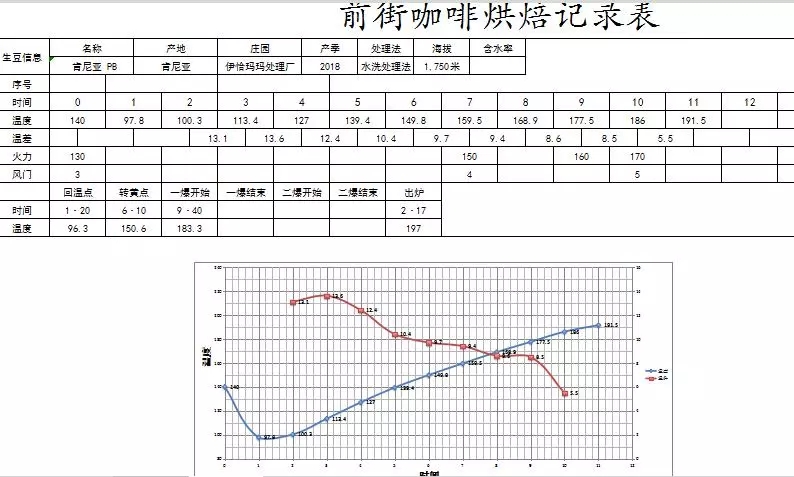
Qianjie roasted a total of 4 stoves, and observed the changes of the state and aroma of beans in each stove. Qianjie coffee baker found that the bean absorbs heat very quickly, and the normal temperature of the bean will lead to a high temperature point, and after an explosion, because the steam takes away a lot of heat, ROR will drop sharply (Crash), so we use four kinds of baking methods according to the changes of beans-1.FSSF (quick in and slow out) baking. 2. Turn yellow and add heat to promote Mena reaction acid baking; 3. Turn brown point and add heat to promote caramelization reaction to sweeten baking; 4.SSFF (slow in and fast out) gradually increase heat and bake.
Comparing the state of 4 stoves of cooked beans, it can be seen that if this bean is used to reduce the heat step by step, there will be more silver skin adhesion, which is judged as underdeveloped, and the aroma in baking is mainly with green and astringent sour aroma. And the other three stoves due to the use of fire operation, the degree of development is relatively ideal, there are black plum, blackcurrant and sugarcane sweet fragrance in baking. So the No. 2, No. 3 and No. 4 baking lines were selected to test the cup to see which baking method can better show the flavor characteristics of beans.
Through the cup test, Qianjie believes that this PB round bean aroma is steady and ripe, with a touch of sour red wine, dark berry flavor, apple acidity, mellow and full taste, sugar cane sweetness and some permitted aroma. By comparing the flavor presented by different baking methods, we found that baking with a longer dehydration time can remove the astringency caused by uneven dehydration and make it taste more round.
Of course, the above is just the baking method understood in the front street, which takes longer than usual to remove moisture from the beans and add fire to the browning point and before the explosion. Interestingly, replenishing calories by adding heat before the explosion can effectively prevent the bean's ROR from plummeting and overdeveloping. Kenyan round beans are less exposed to coffee in front of the street. The roasting of round beans and the flavor of Kenyan round beans are worthy of in-depth exploration. The overall impression of this Icharma pearl pea is different from the general Kenyan AA. It has no bright sour and ripe tomato aroma and has a soft flavor.
In order to directly analyze the difference between the two, Qianjie boiled a cup of Kenyan AA coffee beans with the same parameters. As before, let's start with a brief introduction to coffee beans:
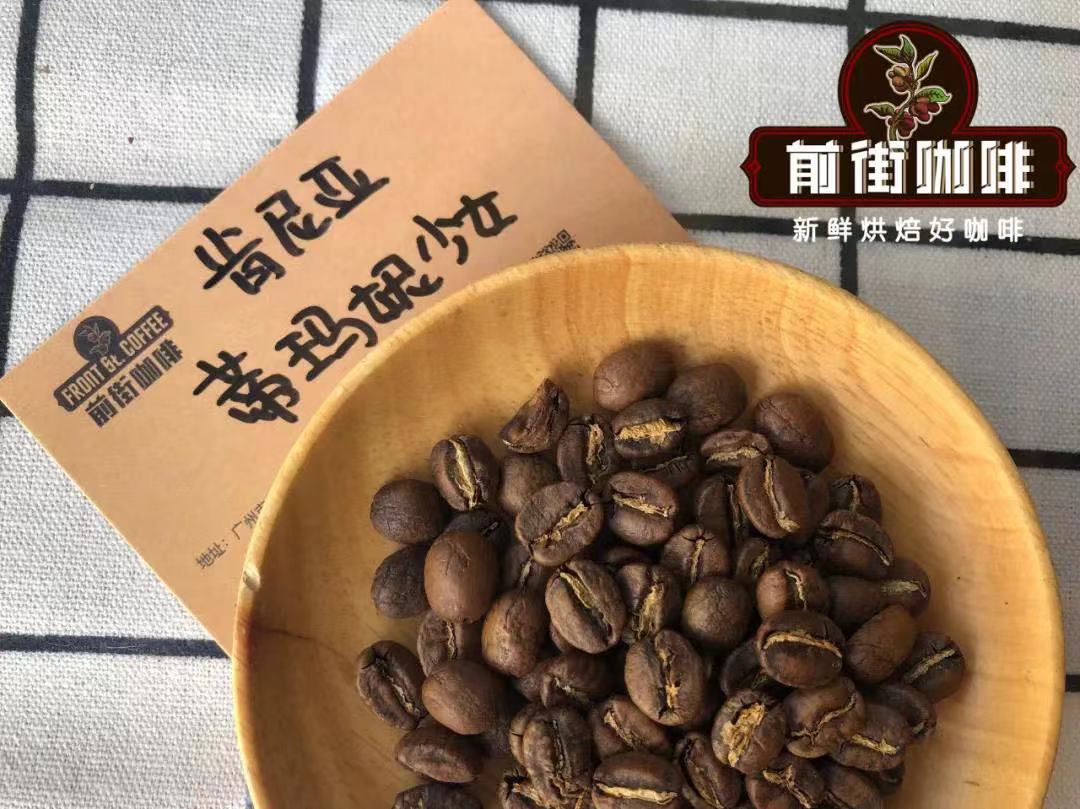
Kenya Timani Girl AA Coffee beans
Production area: Neri Ndima-ini processing Plant
Altitude: 1700-1900 m
Variety: SL28&SL34
Treatment: K72 washing
Grade: AA
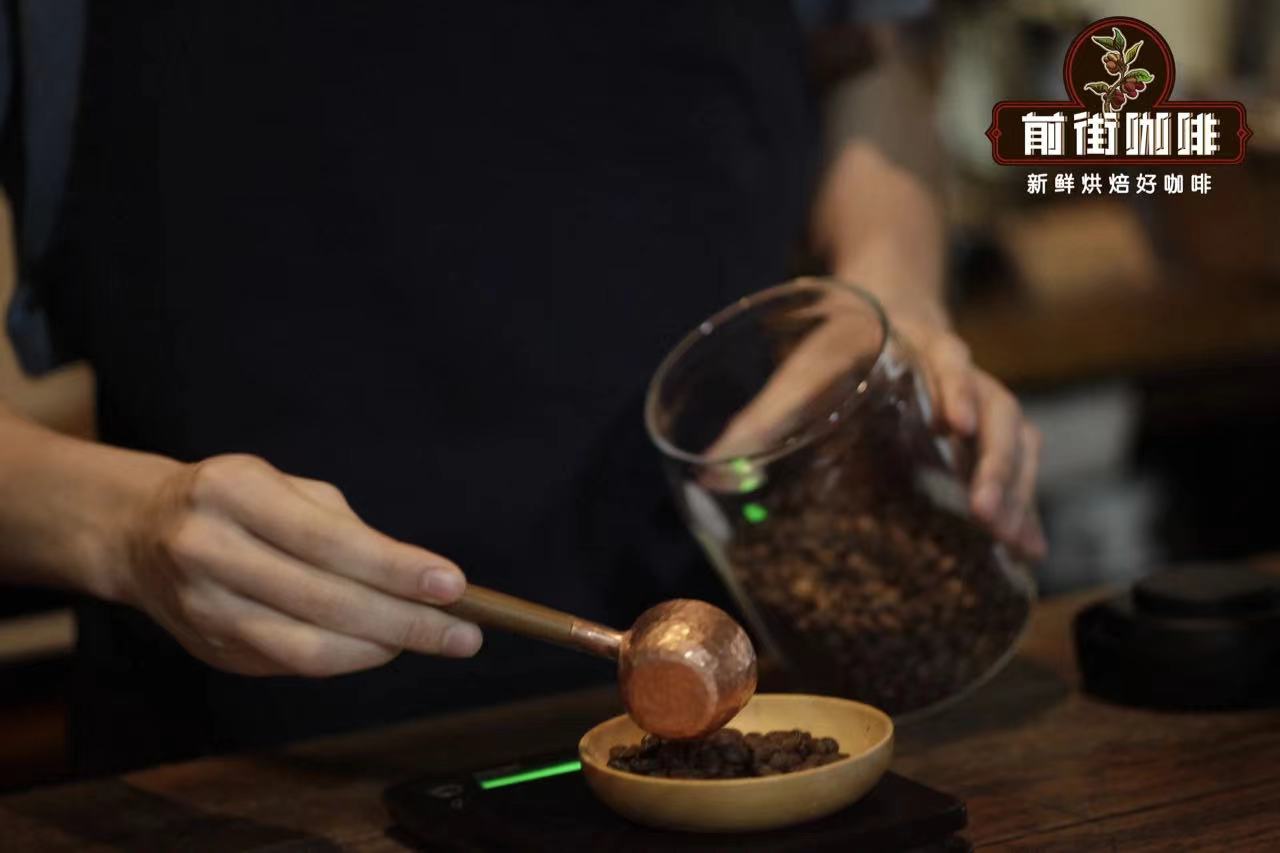
Although the coffee bean was shown to be fermented for 72 hours, it actually fermented for 80 hours. Therefore, the acidity of Kenyan coffee washed with this water will be more obvious. So how do you make Kenyan coffee? Qianjie cooking suggestion:
Filter cup: V60
Water temperature: 90 degrees
Amount of powder: 15g
Ratio of powder to water: 1:15
Degree of grinding: medium to fine (standard screen screening rate of 77% on the 20th)
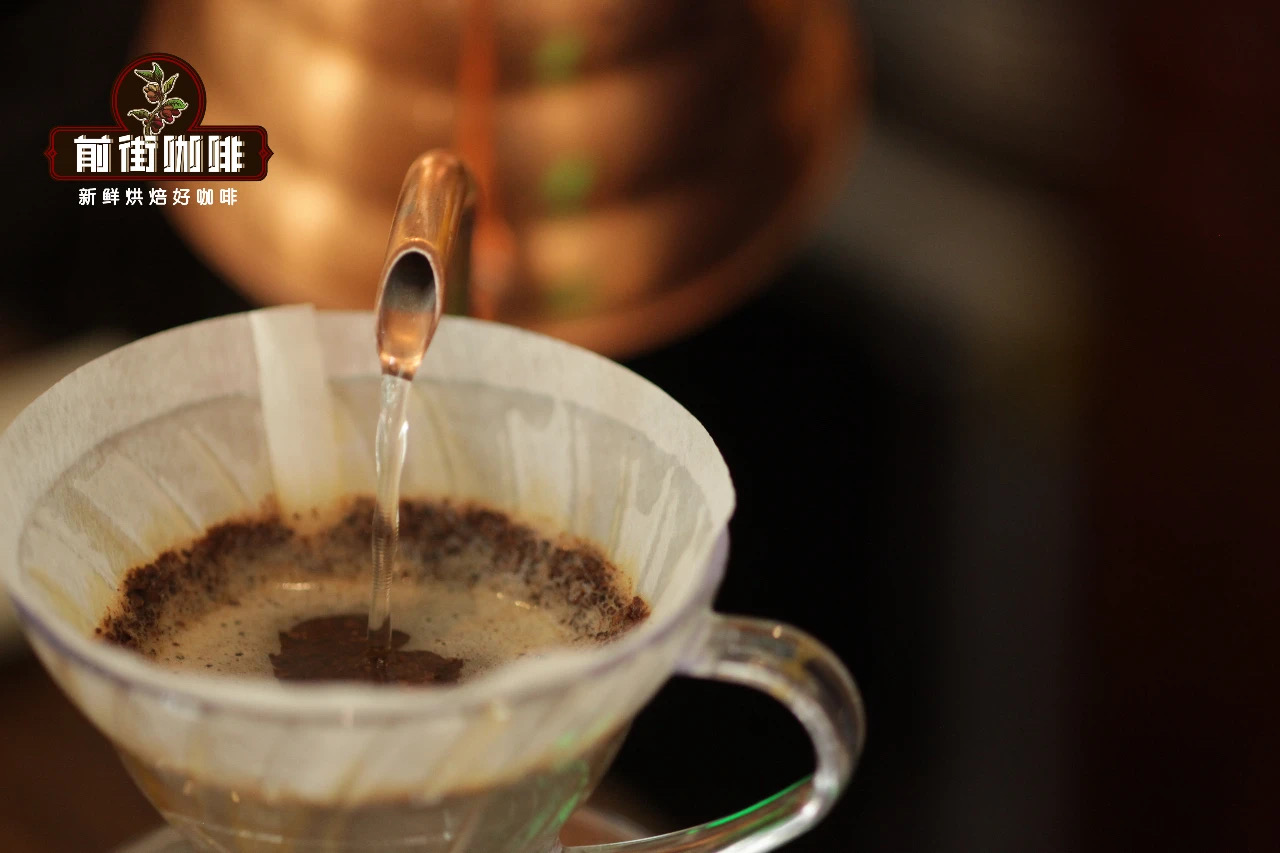
Qianjie extraction method: Qianjie coffee is extracted by stages, steamed with 30 grams of water for 30 seconds, a small flow of water is injected around the circle to 125 grams, the water level is about to be exposed to the powder bed, and the filter cup is removed when the water level is about to expose the powder bed.
Kenyan coffee features: this coffee will have a very obvious dark berry flavor, charming and bright sweet and sour taste at the entrance, the drop in temperature will change the acidity of the grapes, and there will be the irritating acidity of plums at low temperatures. the overall layer is high and delicate and the finish is long.
Important Notice :
前街咖啡 FrontStreet Coffee has moved to new addredd:
FrontStreet Coffee Address: 315,Donghua East Road,GuangZhou
Tel:020 38364473
- Prev
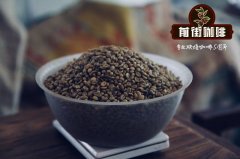
Costa Rican Tang Oscar processing Plant washed Coffee beans introduced to Costa Rica Tang Oscar Office
Professional coffee knowledge exchange more coffee bean information please pay attention to the coffee workshop (Wechat official account cafe_style) Costa Rica Tang Oscar processing plant washing English name Don Oscar Volfa Lot#18 Fully Washed national Costa Rica production area Tarazhu (Tarrazu) graded SHB producer Beneficio Don Oscar Volfa treatment water washing
- Next
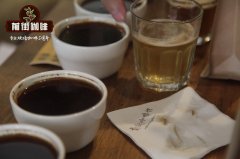
What is Brazilian Bourbon Tip Coffee Bean Bourbon Tip Coffee Bean Flavor Introduction
Professional coffee knowledge exchange More coffee bean information Please pay attention to Coffee Workshop (Weixin Official Accounts cafe_style) In the 2018 World Coffee Brewing Competition, a bourbon tip from Brazil defeated a group of Panama and Honduras. So what kind of coffee bean is bourbon tip? What does bourbon tip taste like? Xiaobian to introduce you to Bourbon Point Coffee
Related
- Detailed explanation of Jadeite planting Land in Panamanian Jadeite Manor introduction to the grading system of Jadeite competitive bidding, Red bid, Green bid and Rose Summer
- Story of Coffee planting in Brenka region of Costa Rica Stonehenge Manor anaerobic heavy honey treatment of flavor mouth
- What's on the barrel of Blue Mountain Coffee beans?
- Can American coffee also pull flowers? How to use hot American style to pull out a good-looking pattern?
- Can you make a cold extract with coffee beans? What is the right proportion for cold-extracted coffee formula?
- Indonesian PWN Gold Mandrine Coffee Origin Features Flavor How to Chong? Mandolin coffee is American.
- A brief introduction to the flavor characteristics of Brazilian yellow bourbon coffee beans
- What is the effect of different water quality on the flavor of cold-extracted coffee? What kind of water is best for brewing coffee?
- Why do you think of Rose Summer whenever you mention Panamanian coffee?
- Introduction to the characteristics of authentic blue mountain coffee bean producing areas? What is the CIB Coffee Authority in Jamaica?

